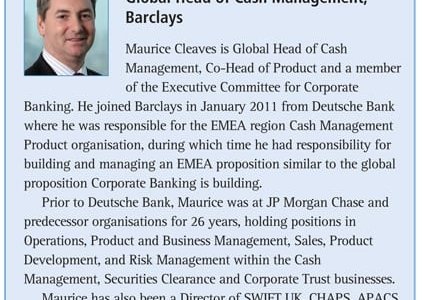by Maurice Cleaves, Global Head of Cash Management, Barclays
After several years of looking to streamline their banking relationships, multinational corporations are now increasingly opting to work with larger groups of banks. Multi-banking is not a new model – but companies choosing this approach today are doing so for different reasons than in the past.
In previous years, companies often adopted a multi-banking approach because their decision-making processes took place at a local rather than a central level, or because there was no suitable electronic environment enabling them to adopt a global banking structure. In Europe, the absence of standardised payment instruments before SEPA – and the proliferation of different currencies before the introduction of the euro – also made a multi-banking model the most practical solution for many companies.
As some of these factors changed, many companies started to favour the efficiency offered by a single banking model – but more recently, companies have once again begun to opt for a multi-banking approach. Today, the decision to multi-bank is largely being driven by risk management concerns: companies do not necessarily want to be tied to a single bank and are looking to spread that risk. At the same time, companies have more choice than they did in the past and are able to create centralised treasury service infrastructures linked together with strong electronic banking support, whether that is through SWIFT, through host-to-host file transfer capability or through banks’ proprietary systems.
A multi-banking approach is not without its drawbacks. In this type of arrangement visibility over cash balances may suffer and it may not be possible to maximise the efficiency of the company’s cash by sweeping balances to a centre. Companies may therefore have to work harder in order to get appropriate returns from their cash. Technology is another challenge: in order to work with multiple banks in a standardised way companies must make sure that they choose the most suitable bank connectivity methods, treasury management systems and ERP systems.
Sign up for free to read the full article
Register Login with LinkedInAlready have an account?
Login
Download our Free Treasury App for mobile and tablet to read articles – no log in required.
Download Version Download Version




























